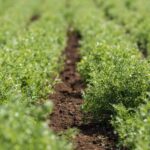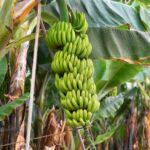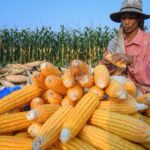Efficient planting is crucial for optimizing crop yields and ensuring sustainable agricultural practices. In South Africa, where diverse climates and soil conditions present both opportunities and challenges, following best practices for planting can make all the difference. This guide outlines key tips for efficient planting that can help South African farmers improve productivity and sustainability.
1. Plan Ahead and Choose the Right Crops
- Understand Your Climate Zone: South Africa’s varying climates mean that different crops thrive in different regions. For example, maize does well in warmer areas, while crops like potatoes and cabbage perform better in cooler, temperate climates.
- Select Disease-Resistant Varieties: Opt for seeds and seedlings that are known for their resistance to common pests and diseases in your region to minimize losses.
2. Prepare the Soil Properly
- Test Your Soil: Conduct a soil test to determine its pH level and nutrient composition. This will help you understand what type of amendments are needed for optimal growth.
- Enhance Soil Fertility: Use organic compost, manure, or biofertilizers to enrich the soil with essential nutrients and improve its structure.
- Tillage Techniques: Consider conservation tillage practices like minimum till or no-till, which reduce soil erosion, enhance moisture retention, and support soil biodiversity.
3. Optimize Planting Schedules
- Follow Seasonal Guidelines: Planting crops at the correct time of year ensures that they receive the appropriate amount of sunlight, rain, and temperatures for growth.
- Stagger Planting for Continuous Harvest: Plant crops in batches over a period of weeks to spread out the harvest period. This approach can improve cash flow and labor efficiency during the harvest season.
4. Choose the Right Planting Method
- Direct Seeding vs. Transplanting: Decide whether to sow seeds directly into the soil or transplant seedlings. Direct seeding is more economical for crops like maize, while transplanting is better for crops such as tomatoes and lettuce, which benefit from an early start.
- Row Spacing and Plant Density: Optimize the spacing between rows and plants to maximize sunlight exposure and airflow, which can reduce the risk of disease and improve yields. For example, maize typically needs about 20-30 cm spacing between plants and 60-75 cm between rows.
5. Use Efficient Irrigation Techniques
- Drip Irrigation: Consider drip irrigation systems for water conservation. This technique delivers water directly to the root zone, reducing water waste and improving plant health.
- Monitor Soil Moisture: Use moisture meters or soil sensors to determine when and how much water is needed. This helps prevent over- or under-watering.
- Water Timing: Water early in the morning or late in the afternoon to minimize evaporation losses, especially in hot regions.
6. Implement Integrated Pest Management (IPM)
- Natural Predators: Encourage the presence of beneficial insects like ladybugs and praying mantises, which help control pest populations naturally.
- Companion Planting: Grow companion plants that repel pests or enhance the growth of main crops. For example, planting marigolds with vegetables can deter nematodes and aphids.
- Use Organic Solutions: Implement natural repellents and organic pesticides to manage pests without harming the environment.
7. Embrace Mechanization and Technology
- Modern Equipment: Invest in machinery that suits your farm size and budget, such as seed drills for uniform seed distribution or planters for large-scale operations.
- Precision Farming: Utilize GPS and satellite mapping tools for precision planting. These technologies help farmers plant accurately, conserve resources, and maximize yields.
- Drones and Apps: Drones can be used for aerial monitoring, while agricultural apps provide real-time weather updates and crop management advice.
8. Ensure Proper Seed Handling
- Use High-Quality Seeds: Purchase seeds from reputable suppliers to ensure high germination rates and healthy plants.
- Seed Treatment: Treat seeds with biofertilizers or organic protectants to encourage better germination and resistance to early diseases.
- Proper Storage: Store seeds in a cool, dry place to maintain their viability before planting.
9. Maintain Crop Rotation Practices
- Prevent Soil Depletion: Avoid planting the same crops in the same soil year after year, which can deplete nutrients and lead to increased pest problems.
- Diversify Crops: Rotate crops like maize, beans, and leafy greens to maintain soil health and productivity. Legumes, for instance, can naturally fix nitrogen into the soil, benefiting subsequent crops.
10. Stay Updated and Engage with the Community
- Attend Workshops and Training: Participate in local agricultural workshops to learn about new planting techniques and best practices.
- Connect with Agricultural Experts: Build relationships with agricultural extension officers and other experts for personalized advice and guidance.
- Join Farmer Cooperatives: Being part of a cooperative or farmers’ group can give you access to bulk purchasing options and shared resources, such as equipment or expertise.
Efficient planting practices can significantly impact crop yields, farm profitability, and long-term sustainability. By planning ahead, optimizing soil preparation, using smart irrigation, and embracing modern technology, South African farmers can enhance their planting strategies. Integrating these tips into your daily operations will not only lead to a successful planting season but also contribute to a more sustainable farming future.









